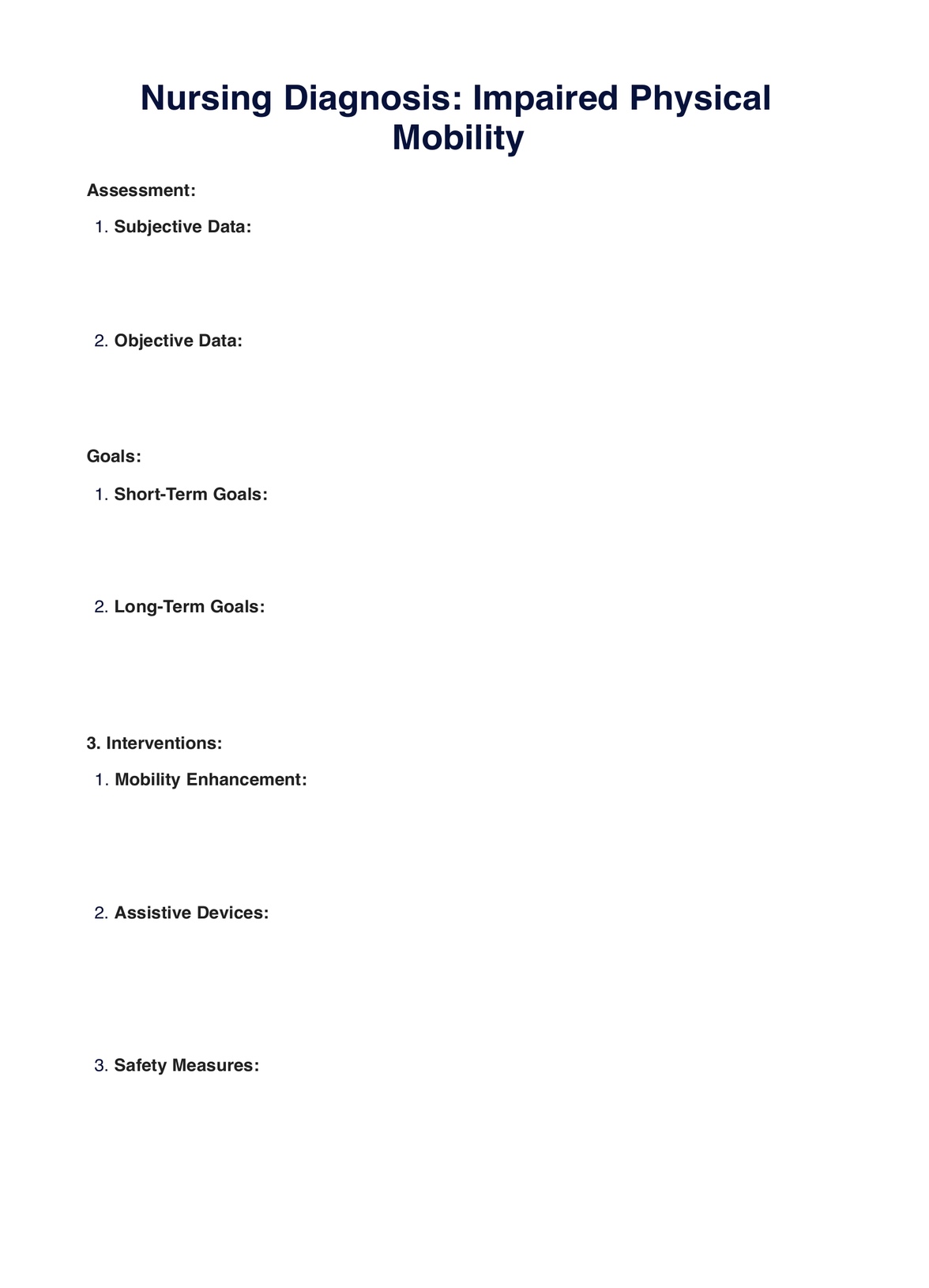
Optimize patient mobility and independence with evidence-based Impaired Physical Mobility Nursing Care Plans. Comprehensive strategies for improved outcomes.

By Wynona Jugueta on Jul 25, 2024.


Impaired physical mobility nursing diagnosis refers to a clinical judgment made by a nurse regarding a patient’s decreased ability to move independently or perform physical activities due to various factors. This diagnosis is based on a thorough assessment of subjective and objective data, including patient reports of discomfort, limited range of motion, uncoordinated movements, and reliance on assistive devices.
Nurses identify impaired physical mobility as a primary issue and may further assess contributing factors such as muscle weakness, pain, or neurological impairment. Consequently, this diagnosis guides the development of a personalized care plan aimed at improving mobility, preventing complications, and promoting overall well-being for the patient.
Moreover, impaired physical mobility is characterized by a limitation in the body’s independent, purposeful physical movement or one or more extremities. It can be temporary, permanent, or progressive, often resulting in complications such as skin breakdown, infections, falls, and social isolation (Wagner, 2023). Addressing risk factors like advancing age, chronic pain, and neuromuscular impairments is crucial for enhancing patient outcomes. Impaired physical mobility related to conditions such as decreased muscle strength secondary to prolonged intubation and contractures secondary to cerebral palsy requires specific care interventions.
Furthermore, recognizing the multifaceted nature of impaired physical mobility is essential in nursing care. This condition can stem from various factors, including neuromuscular disorders, acute pain post-surgery, prolonged bed rest, skeletal deformities, cognitive impairment, obesity, fear of falling among the elderly, and peripheral neuropathy (Wayne, 2023). Each condition requires tailored interventions to promote mobility and prevent complications.